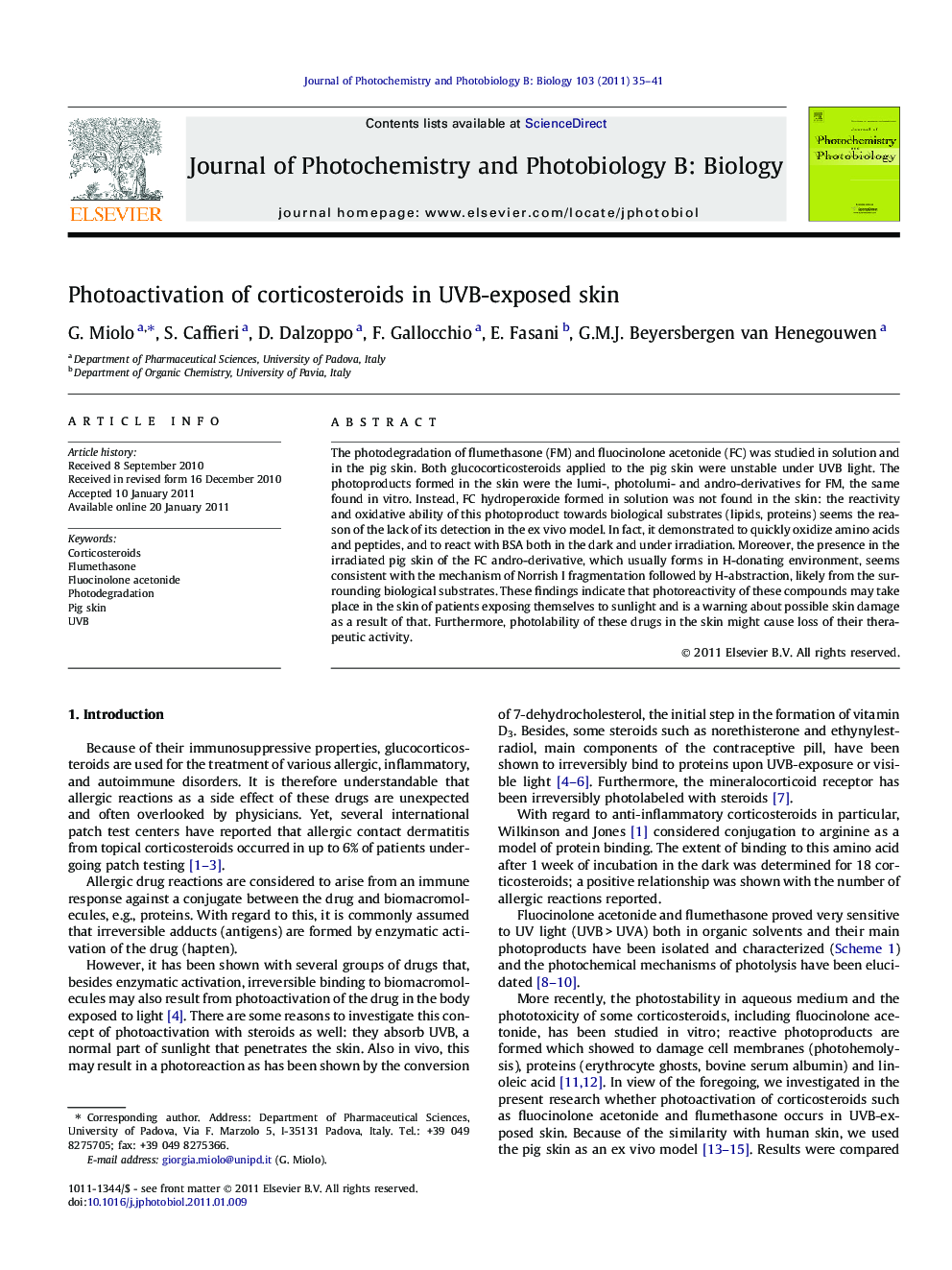| Article ID | Journal | Published Year | Pages | File Type |
|---|---|---|---|---|
| 30951 | Journal of Photochemistry and Photobiology B: Biology | 2011 | 7 Pages |
The photodegradation of flumethasone (FM) and fluocinolone acetonide (FC) was studied in solution and in the pig skin. Both glucocorticosteroids applied to the pig skin were unstable under UVB light. The photoproducts formed in the skin were the lumi-, photolumi- and andro-derivatives for FM, the same found in vitro. Instead, FC hydroperoxide formed in solution was not found in the skin: the reactivity and oxidative ability of this photoproduct towards biological substrates (lipids, proteins) seems the reason of the lack of its detection in the ex vivo model. In fact, it demonstrated to quickly oxidize amino acids and peptides, and to react with BSA both in the dark and under irradiation. Moreover, the presence in the irradiated pig skin of the FC andro-derivative, which usually forms in H-donating environment, seems consistent with the mechanism of Norrish I fragmentation followed by H-abstraction, likely from the surrounding biological substrates. These findings indicate that photoreactivity of these compounds may take place in the skin of patients exposing themselves to sunlight and is a warning about possible skin damage as a result of that. Furthermore, photolability of these drugs in the skin might cause loss of their therapeutic activity.
► Flumethasone and fluocinolone acetonide proved unstable under UVB light. ► The same flumethasone photoproducts in the pig skin were found in solution. ► The hydroperoxide of fluocinolone acetonide oxidizes amino acids and peptides. ► Flumethasone and fluocinolone acetonide photodamage proteins. ► Photoreactivity of glucocorticosteroids may cause loss of therapeutic activity.
